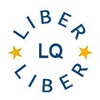The development and face validity testing of the Open Test of Information Literacy with context-specific add-ons: OTIL
DOI:
https://doi.org/10.18352/lq.10264Keywords:
Information Literacy, Assessment, Test DevelopmentAbstract
The OTIL is a new information literacy (IL) test, designed to be flexible and adjustable for use across a variety of contexts where IL is important. This paper discusses the development and face validation of OTIL and a Higher Education (HE) add-on that can be used to make the test HE specific. OTIL was developed in line with the new CILIP (2018) definition. It is comprised of a core set of general IL questions which can be combined with context-specific add-on question sets. Categories of IL form a template that can be used for additional question creation. Additionally, we have developed add-on questions for HE which do not contain in-built specificities to domain, region or institution in order to permit for IL research across different universities. The OTIL is designed for longitudinal research, with three different test versions available. The categories, general questions, and HE questions have been face validity tested with a panel of experts. The expert panel found the OTIL to be relevant and to accurately represent what is meant by IL. Feedback from the panel was used to refine and improve the test questions. The OTIL aims to be adaptable to different information contexts, in recognition of the diverse ways in which IL can be expressed. We encourage researchers in IL to use the OTIL and create add-on question sets for their different information settings.Downloads
Download data is not yet available.

Downloads
Published
2019-02-18
Issue
Section
Articles
License
Copyright (c) 2019 Helena Hollis, Marina Rachitskiy, Leslie van der Leer

This work is licensed under a Creative Commons Attribution 4.0 International License.
How to Cite
The development and face validity testing of the Open Test of Information Literacy with context-specific add-ons: OTIL. (2019). LIBER Quarterly: The Journal of the Association of European Research Libraries, 29(1), 1-21. https://doi.org/10.18352/lq.10264





